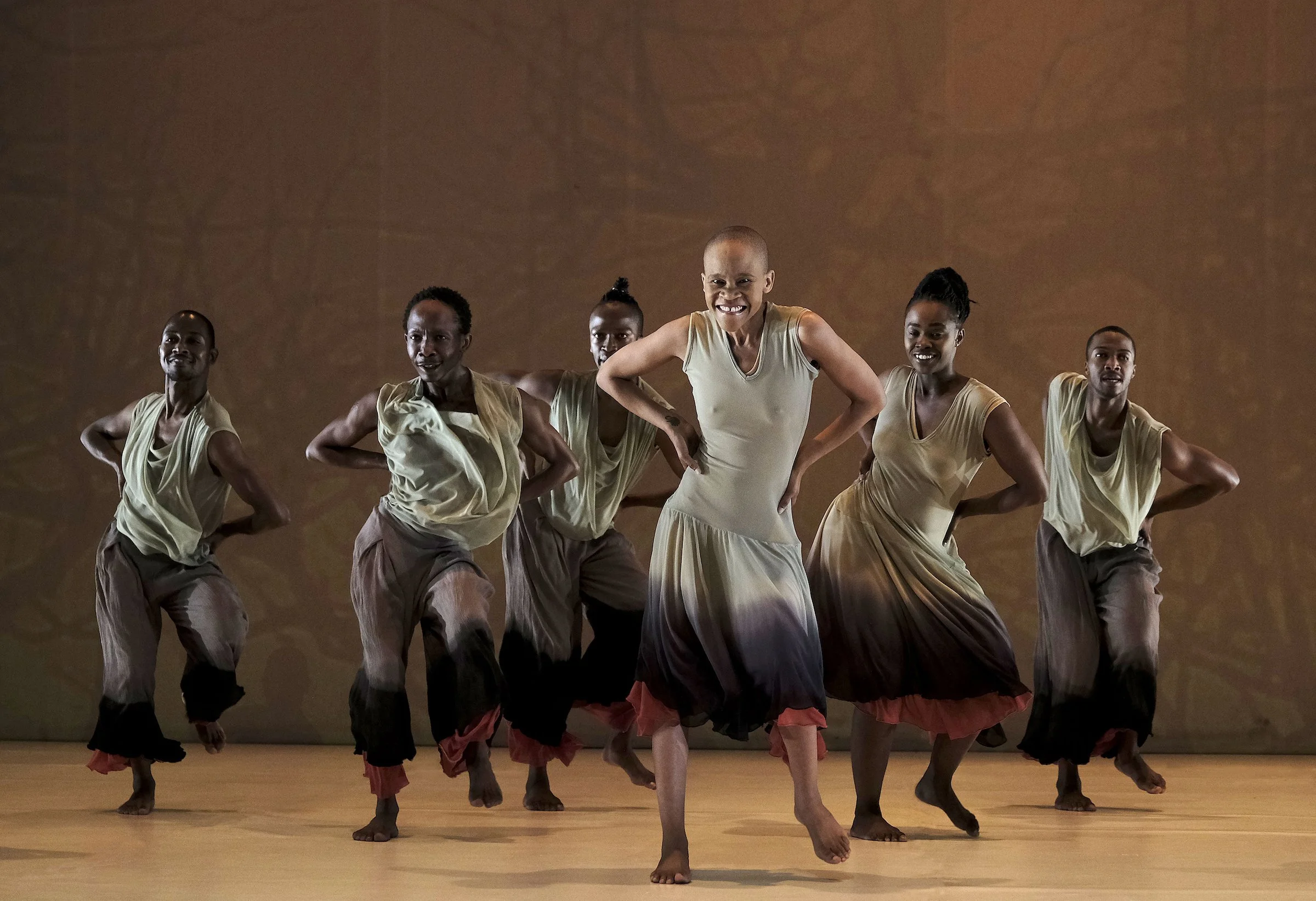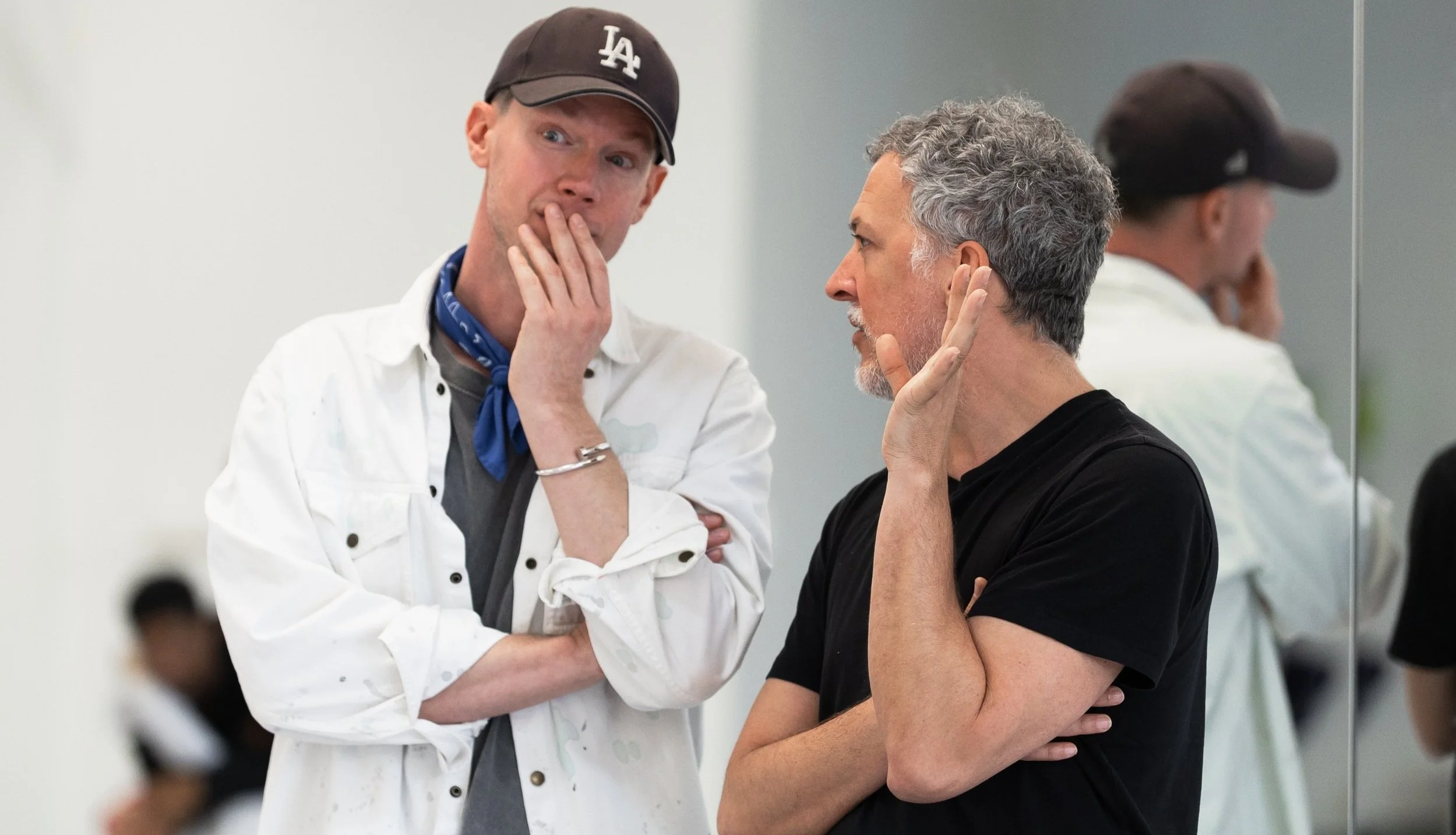South African dance artist Dada Masilo's The Sacrifice reinterprets The Rite of Spring
Dramatic piece for 10 dancers, three musicians, and a singer uses Stravinsky’s ballet as a springboard to explore grief and healing
The Sacrifice. Photo by John Hogg/courtesy DanceHouse
DanceHouse presents The Sacrifice on May 5 and 6 at 8 pm at the Vancouver Playhouse.
SOUTH AFRICAN DANCE ARTIST Dada Masilo was training in Brussels over a decade ago when she first discovered Igor Stravinsky’s The Rite of Spring. The Johannesburg native, who grew up in a Xhosa environment, was instantly attracted to the score’s rhythm. Masilo would return to the iconic ballet years later, creating her own distinct take on the work that shocked Paris in 1913. With its Vancouver premiere bringing DanceHouse’s 2022-23 season to a close, Masilo’s The Sacrifice is unique in the way it fuses contemporary ballet with tswana, the traditional dance of Botswana.
“Stravinsky’s score for The Rite of Spring is so rhythmical,” Masilo tells Stir in a phone interview from her home. “And when I started doing tswana dance, I learned that it’s all about rhythm. So I married the two.
“Early on, I learned from my teachers that rhythm is the heartbeat,” she adds. “If you can feel that thump thump thump of your heart beating, you are connected to rhythm. The Sacrifice is all about rhythm.”
Masilo is artist-in-residence at The Dance Factory in Johannesburg whose works have been performed in 25 countries and 150 cities around the world. She is known for melding African dance with ballet, her adaptations of Romeo & Juliet, Swan Lake, Carmen, and Ophelia having earned widespread acclaim. Tswana is a dance of pride that draws on the physical language of animals, notably meerkats, to energetic effect.
“Early on in my career, I decided I did not want to be put in a box,” Masilo says. “I was very curious about how different dance forms and different ideas coexist and come together to make something that we don’t even know what it is. For me, it is about creating a new dynamic. As a dancer and choreographer, I don’t want to be stagnant. I want to be able to go with what is challenging me. I do the fusions because I’m taken out of my comfort zone. I have to think not just with the brain but with my body and my feet.”
Dada Masilo. Photo by Rob Mills
A piece for 10 dancers, The Sacrifice uses Stravinsky’s composition as a jumping-off point for original music that is performed live on-stage by three artists accompanied by a singer. After its Vancouver run, the work will travel to Ottawa and Toronto before touring the U.S.
Masilo separates The Sacrifice into two parts: the first being preparation for a ritual, the second being the sacrifice itself, a mother offering her child. The piece speaks to the universal experience of the need to give something up for the greater good, give back to help something flourish. Rooted in story-telling and tradition, it explores loss, renewal, and hope.
“The first half is about preparing the earth for the sacrifice,” Masilo says. “In South Africa, that is a very big part of any kind of sacrifice. We use drums as a liberation. It is about asking for help from the ancestors. In African culture, we have to acknowledge them all the time.
“The Sacrifice is about healing and about grieving,” she adds. “I dance when I’m sad, when I want to release that grief. The Sacrifice, for me, has allowed me to heal as a person, as a dancer, as somebody who has seen so much pain. We toured the UK, and I believe for all of us, it has been such a release and a moment to be allowed to be grieving. Dance allows you to express yourself through the body, through movement.”
Masilo has dedicated The Sacrifice to her late beloved grandmother. The artist chose not to go to the matriarch’s funeral but to honour her in her own ways. “I adopted this thing of lighting of a candle, a really beautiful white candle, and speaking to the person that has passed. You don’t have to do these dramatic things… South African funerals are very dramatic; people throw themselves in the grave. I wanted to adopt this thing where I could feel like I needed to speak to my grandmother and say, ‘Victoria, I miss you. I know that you’re here. I know you are an energy and a spirit. I can feel you.’














